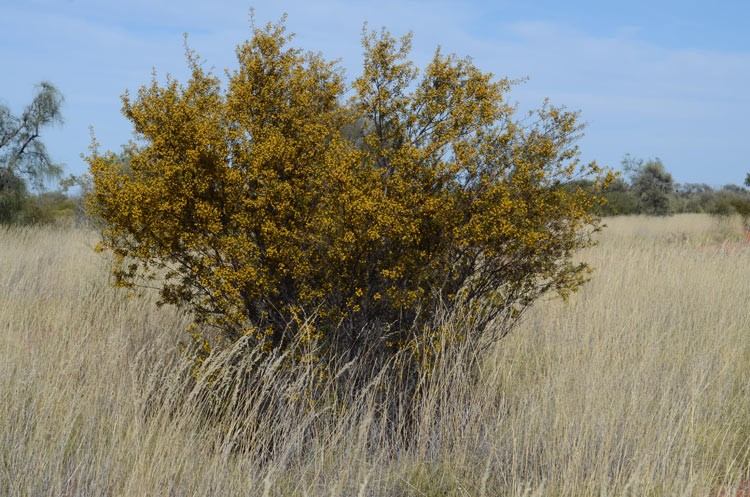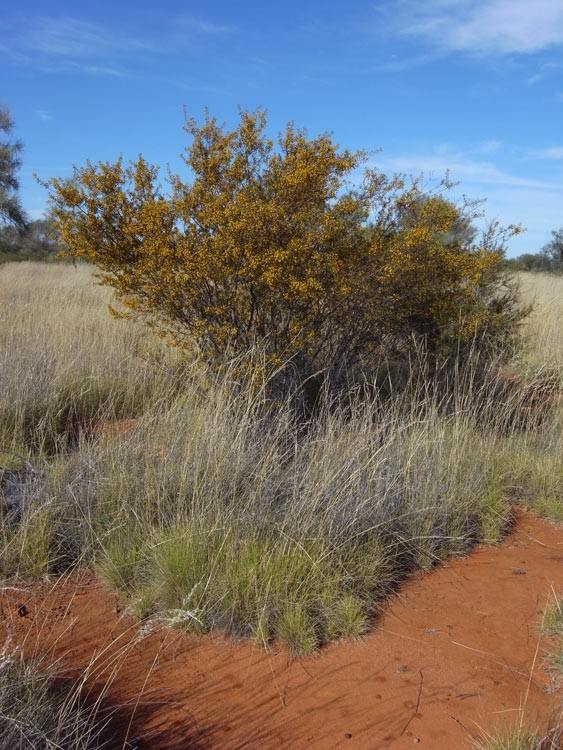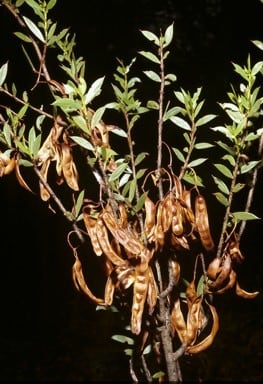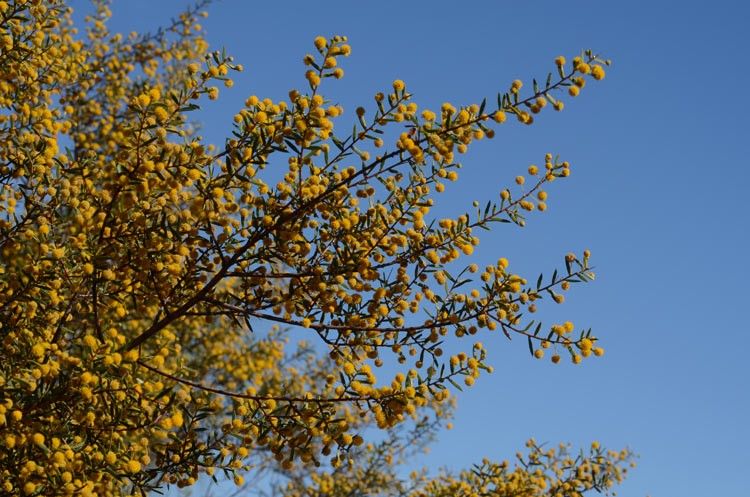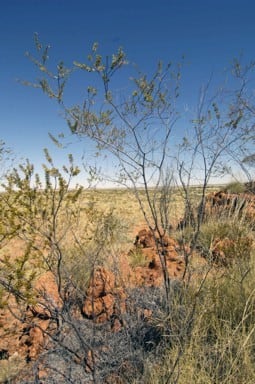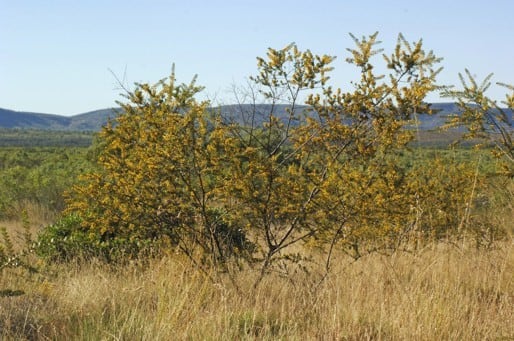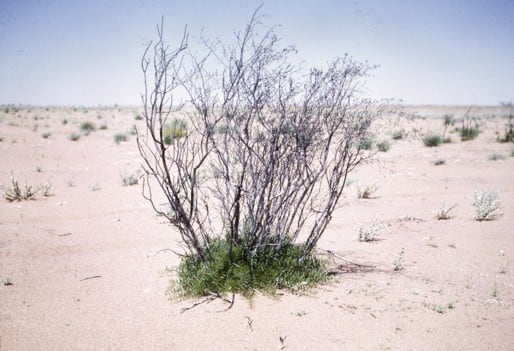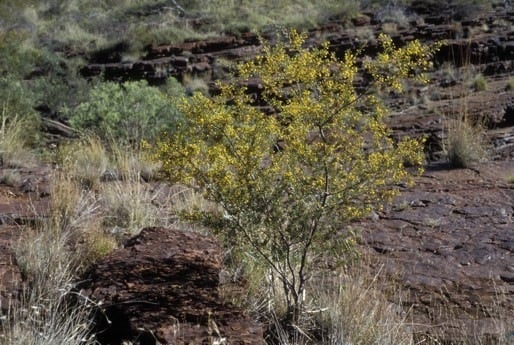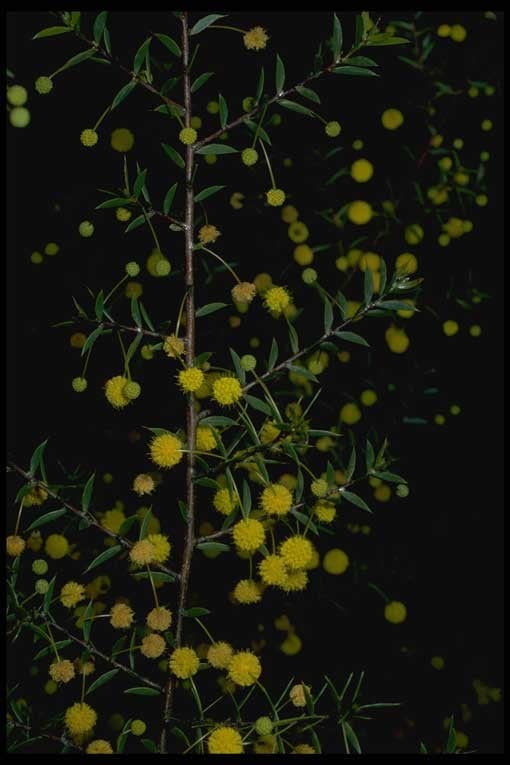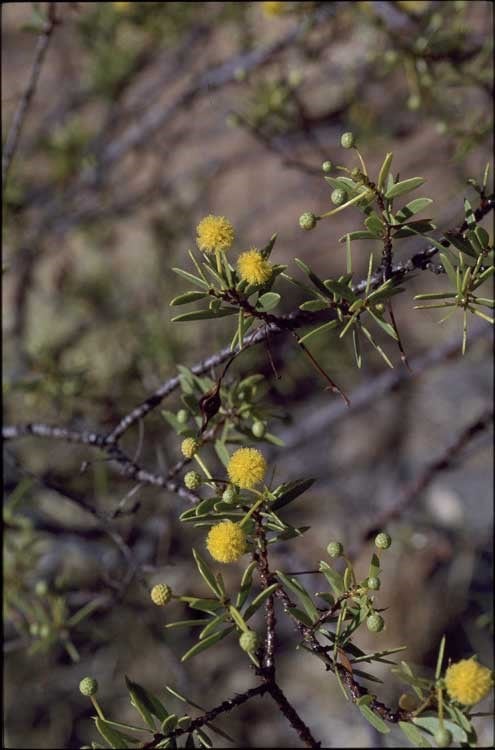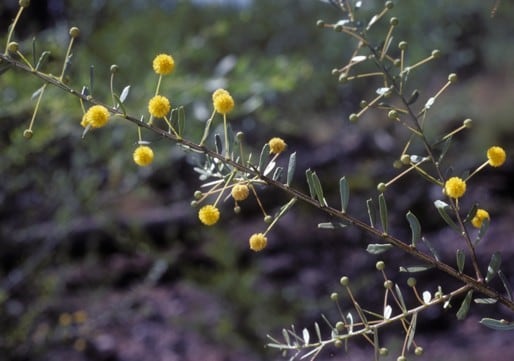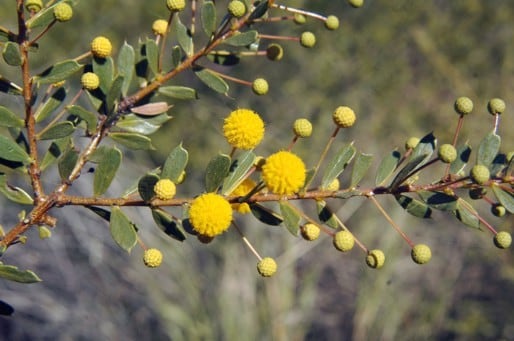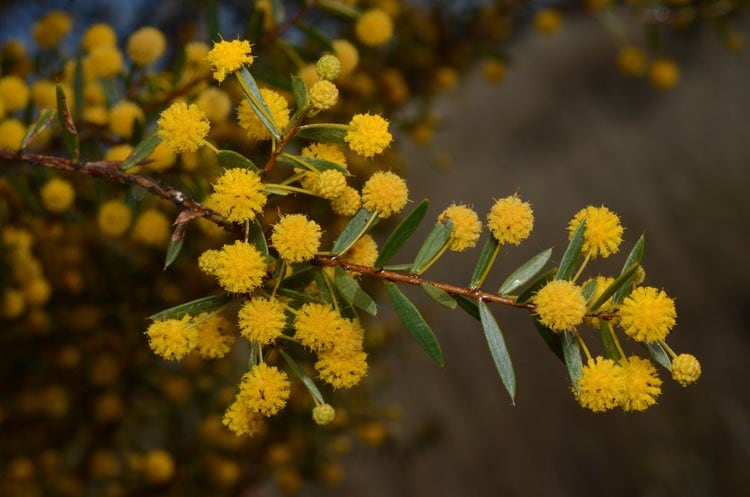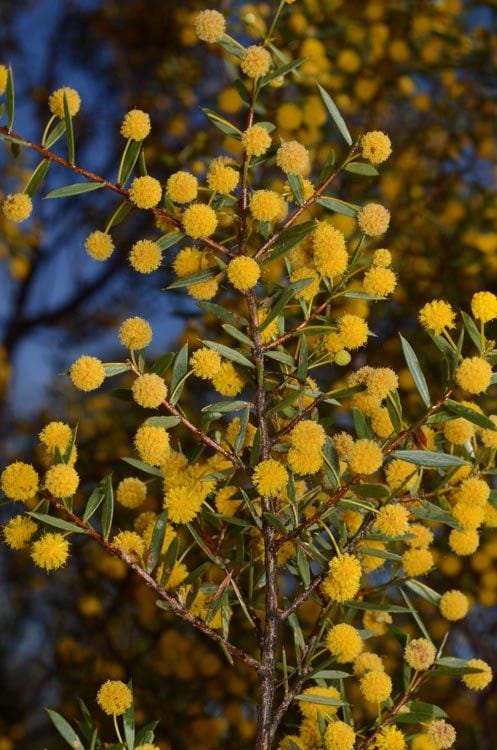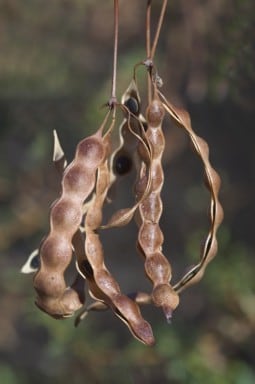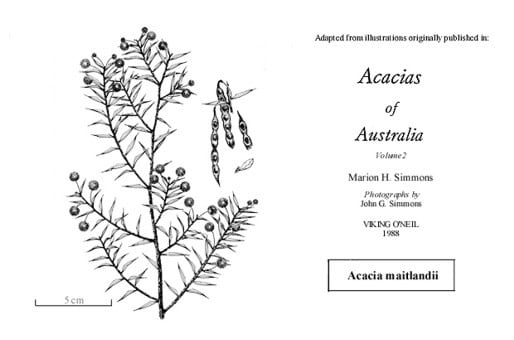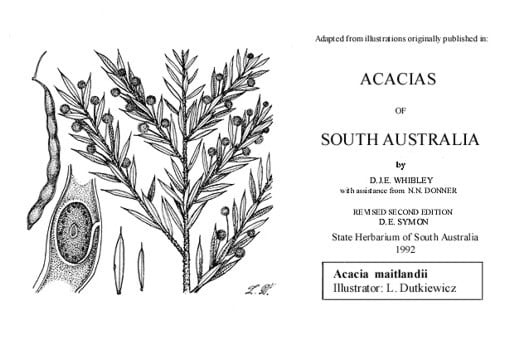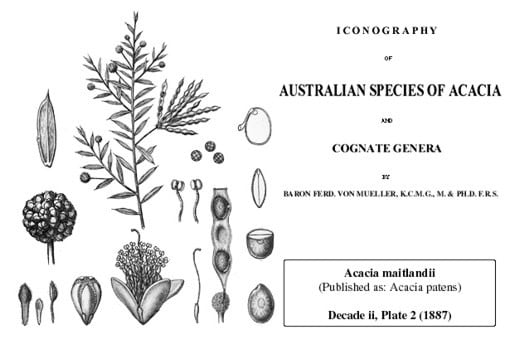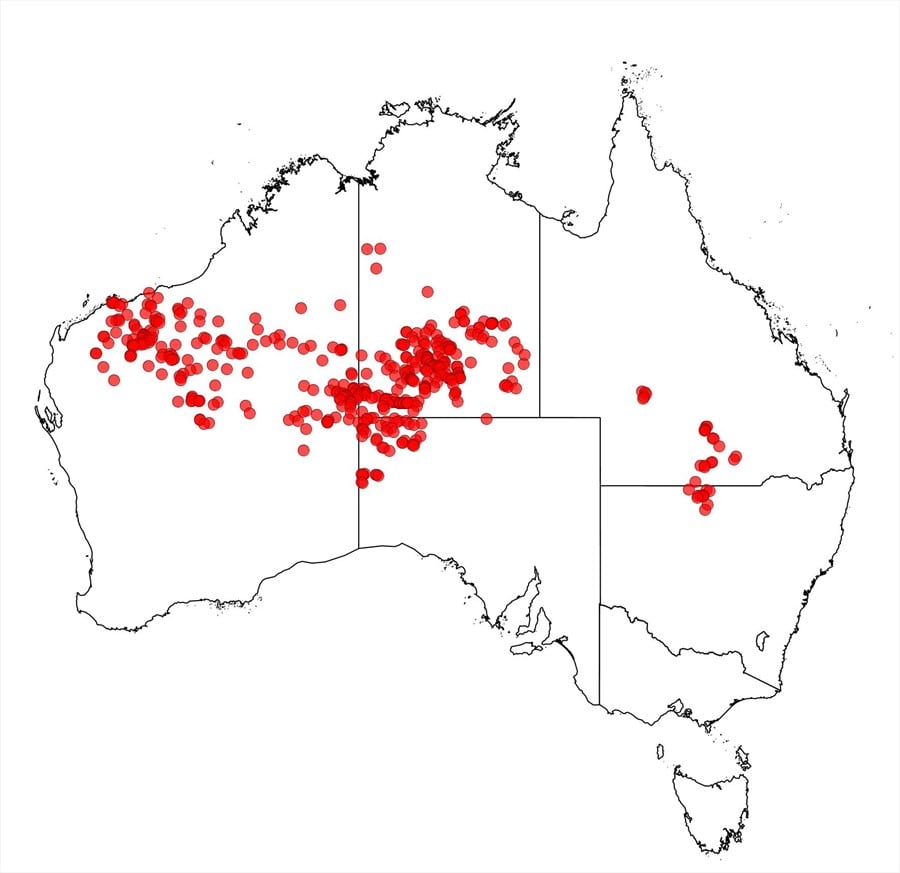Acacia maitlandii F.Muell.
WATTLE
Acacias of Australia
Common Name
Maitland’s Wattle, Spiky Wattle, Spiny-leaved Wattle
Family
Fabaceae
Distribution
Widespread in the arid zone from Dampier and Mt Augustus, W.A., to the western margin of the Simpson Desert, N.T., and Serpentine Lakes area, S.A.; further E it occurs from near Windorah and Jericho, Qld, S to near Enngonia, N.S.W.
Description
Openly branched, erect, normally rather straggly shrub 1–4 m high, becoming rather bushy in well-watered sites. Branchlets red to brown, lenticellular, glabrous, resinous-viscid, scarred where phyllodes have fallen. Stipules 0.5–1.5 mm long, erect, often enveloped in resin. Phyllodes patent to inclined, variable, ±asymmetrically narrowly elliptic to oblong-elliptic or oblong-obovate, (6–) 7–25 (–30) mm long, (1.5–) 2–4 (–5) mm wide with l:w = 3–10, pungent with a slender cusp, rigid, green, glabrous; midrib prominent, rarely with an obscure second nerve, lateral nerves obscure or absent; pulvinus 0.5 mm long, yellow. Inflorescences simple, 1 per axil; peduncles 1–2 (–2.5) cm long (often exceeding the phyllodes), glabrous; heads globular, c. 9 mm diam. (fresh), densely 50–90-flowered, golden. Flowers mostly 5-merous; sepals free, linear-spathulate. Pods rounded over and slightly constricted between seeds, 2–7.5 cm long, (3–) 4–5 (–10) mm wide, firmly chartaceous, glabrous, somewhat viscid when young. Seeds longitudinal, elliptic to ovate, 3.5–4.5 mm long, dark brown, slightly mottled, cream on periphery and bordering pleurogram, exarillate.
Phenology
Flowers May–Aug.
Habitat
Grows in red sand on plains or dunes, or sometimes on rocky slopes, often in mulga scrub, spinifex country or eucalypt open woodland.
Specimens
W.A.: Upper Rudall R. area, B.R.Maslin 2118 (CANB, MEL, PERTH). N.T.: 29 km SE of Aileron town-ship, M.Lazarides 5771 (K, MO, NSW, PERTH). S.A.: c. 4 km N of Mt Lindsay, P.J.Wilson 2499 (AD). Qld: 11 km from Charleville towards Cunnamulla, I.B.Armitage 917 (PERTH). N.S.W.: Burrawantie Stn, W.E.Mulham 1079 (NSW).
Notes
Related to A. minutissima, A. subtiliformis and A. walkeri; its exarillate seeds and pungent phyllodes suggest affinities with the ‘A. pyrifolia’ and ‘A. murrayana’ groups. It superficially resembles A. siculiformis.
The first and second variants noted under A. maitlandii, B.R.Maslin in Fl. Australia 11A: 388 (2001) are now described as A. walkeri and A. minutissima respectively. Acacia maitlandii regenerates from a woody root-stock following cool fire but is killed by hot fire. Although this species is not known in cultivation it may possibly be useful as an ornamental suitable for rockery planting in dry inland areas. Notes on Aboriginal use of A. maitlandii in central Australia are provided by P.Latz, Bushfires & Bushtucker 107 (1995).
The species is rather variable in phyllode shape and size. A specimen with atypically broad pods (about 10 mm wide) is recorded for the Carnarvon Ra., W.A. (M.Hancock 3, PERTH).
FOA Reference
Data derived from Flora of Australia Volumes 11A (2001), 11B (2001) and 12 (1998), products of ABRS, ©Commonwealth of Australia
Author
B.R.Maslin
This identification key and fact sheets are available as a mobile application:
URL: https://apps.lucidcentral.org/wattle/
© Copyright 2018. All rights reserved.
